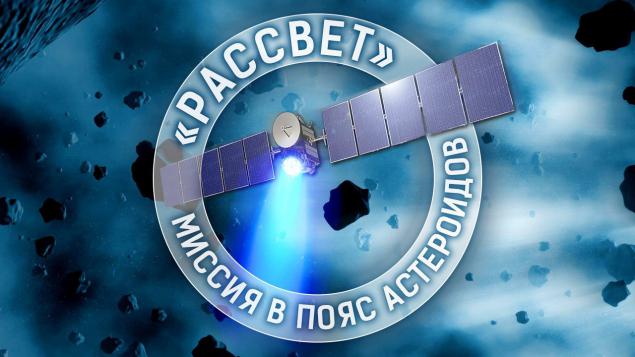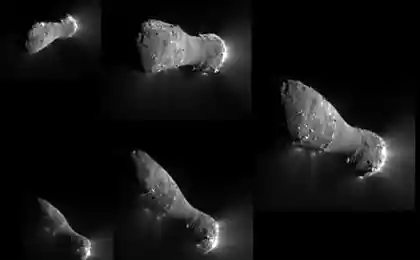771
"Dawn" - the mission in the asteroid belt

April 23 interplanetary probe Dawn (Dawn) has reached an orbital altitude of 13 500 km around the dwarf planet Ceres. Here the work of the spacecraft will last until about mid-May, after which the height of the orbit is planned to gradually reduce to get more opportunities to collect data.
The launch was made from Cape Canaveral American rocket "Delta-2" in 2007. Since then, Dawn managed to visit one of the largest of the Solar System asteroids - Vesta.
The study of this celestial body took command "Dawn" for a year and then embarked on Ceres. Reaching the dwarf planet, Dawn became the first and so far the only spacecraft who visited in an elliptical orbit around the two celestial bodies in succession. Make it a special device allowed him propulsion.
The device is equipped with three ion engines, the fuel which is a noble gas xenon. At the same time it can operate only one of them. The peculiarity of these engines is extremely high fuel efficiency. Using all the available 425 kilograms of xenon on board, the unit can be continuously dispersed for 2 100 days. Created as a result of thrust (91 milliNewtons) is so weak that the NASA it is often compared to the weight of the paper sheet. However, summed for a long time, this power unit is capable of accelerating to very high speeds, which, coupled with gravity assist becomes a very effective tool in the study of outer space.
Officially, the mission of "Breaking Dawn" ends in July 2015. The remaining lifetime of the device to hold in orbit around Ceres. Its tasks will be photographing the surface of the dwarf planet in the visible and infrared ranges, as well as studying the gravitational field and gamma rays.
8 years ago, shortly before the start of the mission, NASA created the video, which explains the reasons why scientists launch a spacecraft to the asteroid belt, one of the most mysterious regions of the solar system.
View video can by clicking on the link .
P.S. In the comments you can offer an interesting video on the translation and dubbing.
Source: geektimes.ru/company/vertdider/blog/249848/
Amazon founder announced the successful testing of a new launch vehicle New Shepard
It is finished! Tesla unveiled the battery system for homes, businesses and the world























